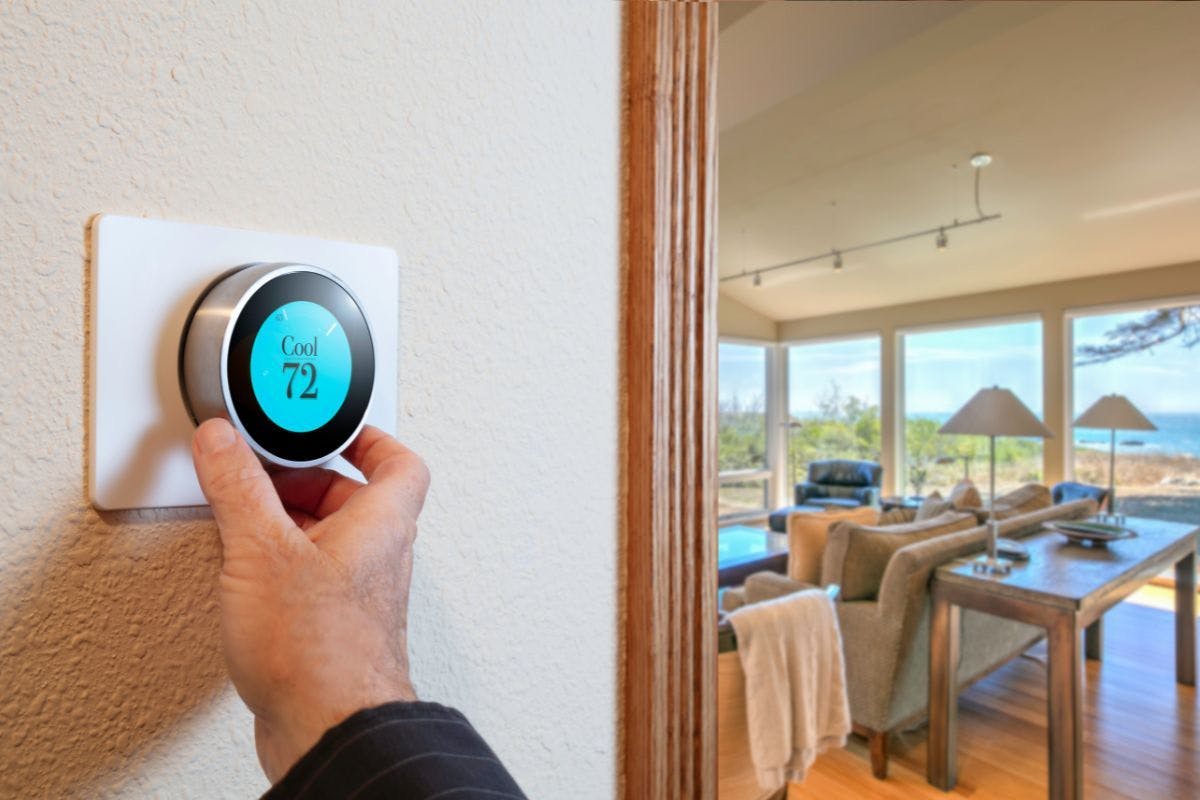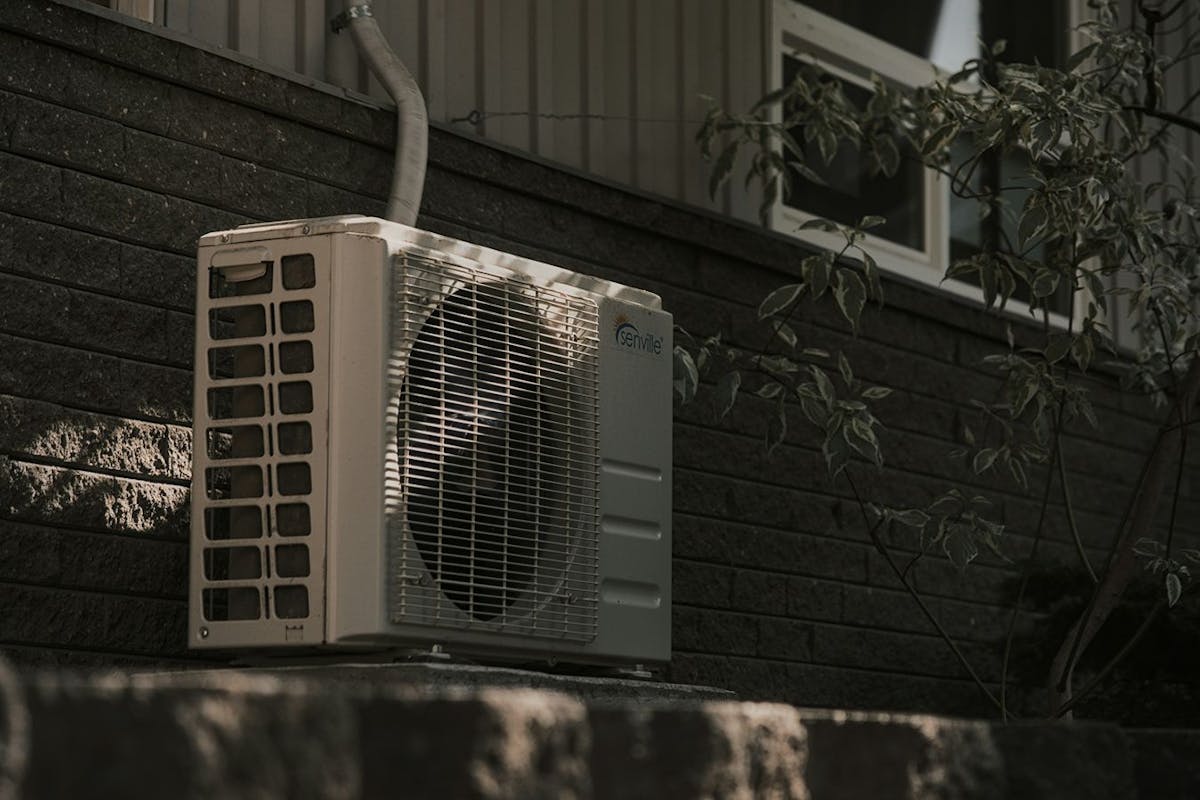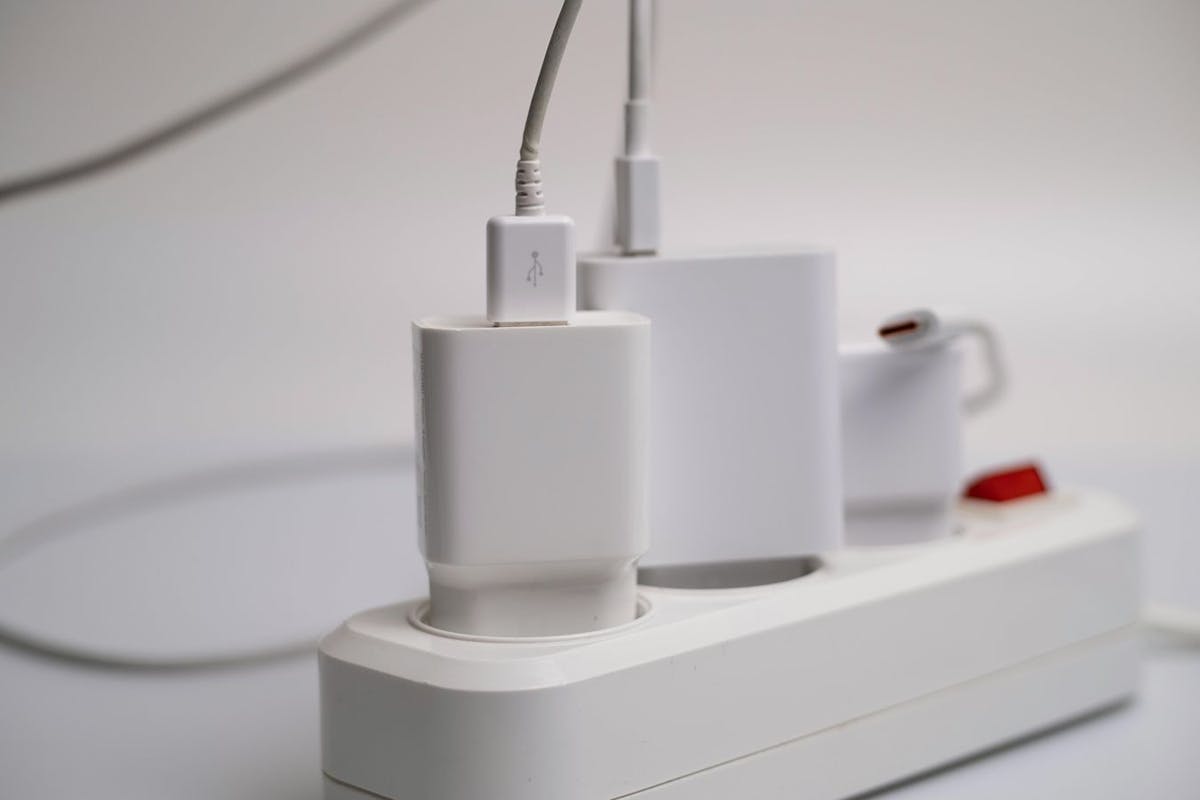Smart Thermostat Guide
Last edited

Author
Andrew Giermak
Solar and Electrification Writer and Editor

Editor
Andrew Blok
Electrification and Solar Writer and Editor

With a programmable or analog thermostat, you have to program it or change it repeatedly to efficiently keep your home at the temperature you want. If you switch to a smart thermostat, you can let it learn your schedule, adjust the temperature when someone’s in the house, and optimize the performance and efficiency of your heating and cooling system. This all saves you money. Here are the ways a smart thermostat could work for your home and your budget.
See how much you can save with home energy changes
What Is a Smart Thermostat?
A smart thermostat does what any older thermostat does with your home heating and cooling but also uses smart technology to control your heating and cooling for optimal performance, efficiency, and convenience.
The “smart” in smart thermostat refers to the technology’s ability to learn from your habits and behaviors in the home and automatically make adjustments to the thermostat’s setting. An analog or programmable thermostat depends entirely on your control and doesn’t provide additional information.
A smart thermostat can work on its own, or you can program it or control it from a phone, tablet, or smart home hub using Wi-Fi or Bluetooth. It can use AI-powered algorithms to calculate optimal heating and cooling schedules and settings without your direct input, to maximize efficiency and comfort.
How a Smart Thermostat Works
A smart thermostat uses processors, algorithms, and sensors to run, or help you program or control, your home heating and cooling.
Analog or programmable thermostats run based on the temperature right around the thermostat and must be controlled manually or with a preset schedule. A smart thermostat can use sensors all over a home to be more efficient and work with different settings in different parts of the house, such as with a zoned heat pump system. It can adjust the temperature based on your presence (or your phone’s).
Can a Smart Thermostat Save You Money?
Smart thermostats generally cost more than analog or programmable ones, so how do you save money? You can save by reducing unnecessary heating and cooling, especially since heating and cooling is a major home energy user.
Relying on your smart thermostat to adjust the interior temperature by 7-10 degrees when you’re away for at least eight hours or by a little less when everyone’s asleep, can save significant money.
If you’re on time of use rates from your utility, a smart thermostat can also make it easier to precool your home, reducing energy use during peak hours. Shifting energy use to cheaper hours can save you money.
Benefits of a Smart Thermostat
Along with saving money, smart thermostats can give you a more comfortable home, better heat pump maintenance, and make your home cleaner and greener. Here are the main benefits with a smart thermostat.
- Savings: Saving energy means saving money.
- Comfort: Smart thermostats give you the most efficient way for your system to meet settings. Smart thermostats in different areas of your home can give you zoned heating and cooling or work perfectly with a zoned mini-split heat pump. You can integrate smart thermostats with other devices like air purifiers, energy monitors, dehumidifiers, and smart vents to make everything about your home climate and air quality better.
- Convenience: You’ll have remote control, from anywhere your phone works. You can use voice control, like with smart systems like Amazon Alexa, Google Home, or Apple HomeKit.
- Maintenance: Monitoring, tracking, alerts, and data coming to you that are easy to use increase the chance you can catch HVAC problems earlier. This can mean lower maintenance costs and extending the life of your HVAC system.
- Environmental: By decreasing your energy usage, you can drop or eliminate your fossil fuel consumption and your home’s carbon footprint.
See how much you can save with home energy changes
How to Install a Smart Thermostat
How to install a smart thermostat, and if it’s best as a DIY job or a professional job, depends upon the make and model, as well as your time and DIY abilities.
The installation process for most smart thermostats follows a basic pattern, so this overview will give you a general idea of what an installation looks like. Consult the manufacturer’s directions for your thermostat’s specific instructions.
- HVAC compatibility: Make sure a new thermostat is compatible with your HVAC system.
- Turn everything off: When you’re ready to start working, turn your HVAC system and the power to it at the electrical panel off.
- Remove the old thermostats: Remove the faceplate and detach the backplate and wires, noting which wire (by color) connects to each connection.
- C-wire: A smart thermostat may need a C-wire (common wire) to have non-stop power. If you need a C-wire installed, an electrician must do this work.
- Install the new backplate: Attach the new backplate to the wall and attach the wires into the same connectors.
- Install the faceplate/display: The new smart thermostat should go into place now.
- Connection: Now you connect the smart thermostat to your Wi-Fi, smart ecosystem, other devices, and an app.
Smart Thermostat Shopping Guidance
The best smart thermostat for you will be simple to use, deliver savings, and have the features you expect to use.
- Cost: You know your budget. You don’t need to overpay for functions or a tech level you’ll never use. At the same time, sometimes getting the cheapest option gives you the cheapest result.
- HVAC compatibility: Not all smart thermostats will work with every home HVAC system. You’ll likely need a technician to connect, or install, a C-wire or common wire if the new thermostat needs it. You need to match a smart thermostat based on if your HVAC is single-stage or multi-stage. Most smart thermostat brands have compatibility tools online.
- Smart compatibility: If you already have Apple, Amazon, Samsung, or Google smart ecosystem, make sure your smart thermostat will work with it.
- Ease of use: Before you buy, see if the tech and controls are easy enough, or advanced enough, for you to use without getting a headache. You don’t want a smart thermostat to make life more difficult.
Best Smart Thermostat Brands
The smart thermostat brand might be important to you because of compatibility or specific features. Most of these brands have Energy Star certified options, but since each brand may have several models available, this is a general overview of each brand.
- Ecobee: Ecobee smart thermostats have sensors in different areas of your home so the temperature is measured in more than one place and it’s more accurate for your whole home. These sensors can connect to smart devices such as Apple's HomeKit, and some have an Alexa speaker built into them. You can earn discounts on ecobee thermostats when you download the free Palmetto app and use it to save energy at home.
- Google Nest: Google Nest smart thermostats know how you manually set your temperatures, and then learn how to control your climate automatically. Their geofencing technology helps them control the settings based on when you are and aren't home. The app also gives you tips on saving energy.
- Sensi: While Sensi smart thermostats have geofencing capabilities you can program, they don't learn from your daily activities. The interface on the Sensi is more colorful than some of the other options. Like most top brands, it can connect to smart speakers such as Amazon and Google.
- Honeywell: Honeywell is a big name in the thermostat industry, so you get good quality for an attractive price. Their thermostats can connect to HomeKit, Google, and Alexa, and have basic geofencing capabilities.
- Amazon: Since Amazon smart thermostats are powered by Honeywell technology, you're getting a brand known for quality, with the addition of Amazon Alexa for voice control.
If you’re looking to save more money, you may be able to lower your energy bills further when you combine a smart thermostat with a home solar energy system. See what solar panels could save you with a free solar savings estimate today. And see what other energy upgrades, like a smart thermostat, could save you by exploring Palmetto’s Savings Maximizer.
See what home electrification can do for you:
Frequently Asked Questions
Are smart thermostats compatible with heat pumps?
You should check any model for compatibility with your heat pump or HVAC system. Most smart thermostats are compatible with many brands, models, and types of heat pumps. A smart thermostat needs to be compatible with a single-speed or a variable-speed heat pump.
Does adjusting your thermostat save you money?
Adjusting your home thermostat when no one’s home, when everyone’s asleep, or in conjunction using ceiling fans can save money.
What’s a C-wire?
Some thermostats need a C-wire to have non-stop power. If you need a C-wire installed, an electrician must do this work.


